There’s more to Bill Sultana’s pro street Model T Ford roadster than meets the eye. The first time you see it you can’t help but try to take in the whole: smooth body, perfect paint, tough stance and big, bad, blown motor. Yet you’re forced to keep coming back for the details. It’s not until you get up close and personal that you realise how much work has gone into this brilliant red beauty.
First published in the August 2004 issue of Street Machine

There’s mind-blowing detail everywhere, but start with the body. You’ll believe Sultana when he says he’s put thousands of hours into getting the Model T’s all-steel body perfect. Seeing the result it’s hard to believe it all began with little more than a cowl and a couple of doors on a pallet.
“I saw it advertised in South Australia,” Sultana said. “I phoned the guy and told him not to sell it to anyone else and I sent him a cheque that day. When it arrived I thought to myself ‘what have I done?’ It was just a couple of panels and they were a mess.”

Sultana wanted to build something different when he dreamt up his first rod project and the Model T was an important difference. Most rodders go for a ’32 Ford — roadster or coupe — or maybe a Model A. Few choose the earlier Model T and, if they do, most go down the well-worn path of the T-bucket roadster. Rarely do they build a full-fendered car like Sultana’s.
Full fenders made sense to Sultana. Local road rules meant he’d have to have them if he wanted to drive on the road, but that didn’t lock him into using Model T fenders and that’s another important difference to most other rods.

Where most rodders would retain the original guards, Sultana blended in a set of early Model A front guards, which wrap around the wheels. The rear guards are also early Model A, trimmed to end level with the body at the rear. Model A running boards and aprons complete the set. Then he joined it into a single-body unit. Neat, huh?
“You see a lot of rods with one-piece fibreglass bodies but I’d never seen a one-piece steel body,” he says, “until I went to the Goodguys Nationals in the US a couple of years ago and saw an all-steel one-piece ’35 coupe there.”


Sighting that rod in the States shook him up — he wanted to build the first all-steel one-piece body — but he’s content knowing his is one of a few in the world and unique in Australia.
Choosing body bits was one thing, grafting them together and finishing them off was something else. It’s necessary to get close to Sultana’s work to properly appreciate it because it just doesn’t jump up and grab you if you don’t.

Look at the seams! There aren’t any — but you have to look for them anyway. The Model A guards blend into the running boards, which blend into the aprons, which blend into the tub — which is no longer stock.
Before he started stitching body bits together, Sultana took the Model T rear deck and widened the dinky little turtle deck Henry crafted in the 20s. Sultana also fabricated a boot lid — the only body bit he didn’t have. He didn’t want a glass deck lid in what was otherwise an all-steel car.
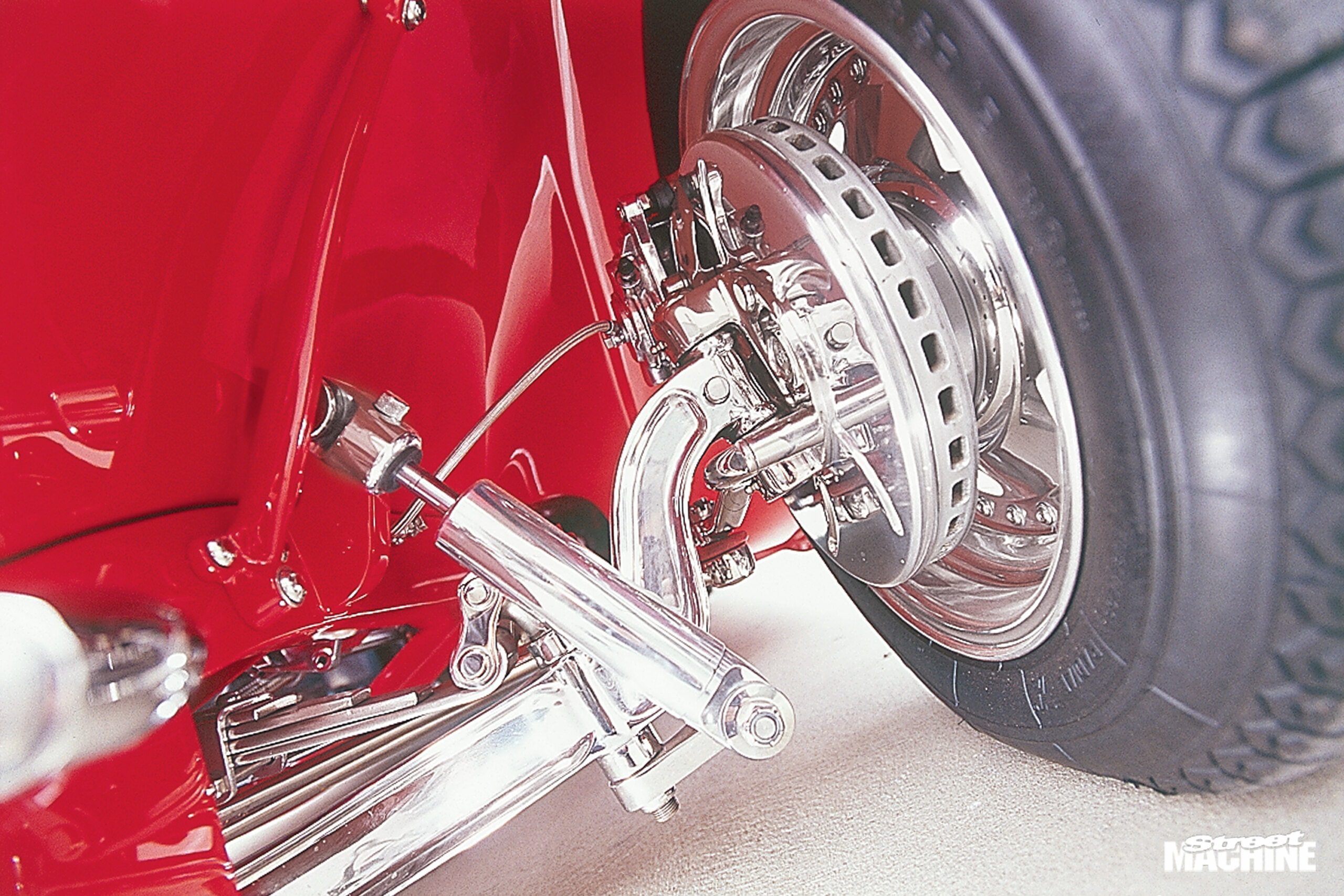
As he reconstructed the body he steeled it out, shaved the door handles and hid the hinges for a totally smooth look. He also fabricated the windshield posts and grafted them into the cowl.
After countless hours welding, grinding and sanding he was ready for paint. A spray painter during the week, Sultana took Holden’s Sting Red and toughened it up by leaving the white out of the formula. Four coats of acrylic colour and six coats of clear produced the brilliant finish. Sultana says he can lift the body off the chassis in five minutes — the whole body in one piece. Then you get a good look underneath, where you find it’s finished just as smoothly as the top.
The body package is completed by a Dan Fink steel ’32 grille and shell, lowered 90mm to line up with the cowl, and laid back a little. Model A tail-lights are used at the rear, but they’re mounted on shortened stalks, which also blend into the guards.

A ’28 Model A Ford chassis is the backbone of the T. Sultana stitched it together with crossmembers to suit the small-block Chev V8 and the THM 350 trans, along with a heavy tube K-frame for strength. It’s stepped up 12 inches at the back to get the arse down low.
There’s stainless everywhere you look. The front axle is a stainless dropped beam, with a stainless four-bar and Aldan shocks. Out back is another stainless four-bar, on a shortened XB Falcon nine-inch running a Harrop polished alloy centre, a Detroit Locker and 31-spline Moser axles. Aldan coil-overs tame bumps.
Stoppers are cross-drilled, ventilated XF Falcon discs with VR Commodore calipers front and rear, while steering employs a Billet column connected to an HQ Holden box.

The heart is a 350 Chev small-block that’s been smoothed and painted in two-pack red to match the body. It’s topped with Bowtie alloy angle-plug heads that have been heavily ported. Inside are Carrillo rods, Keith Black pistons on a steel crank running Federal Mogul bearings, lubed from a Street Rod Undies sump.
A Barry Grant 220 fuel pump hauls fuel from a 40-litre custom alloy tank and delivers it to a pair of polished Holley 600cfm double pumpers, topped by a Hilborn cap. They dump their load into a 6/71 BDS blower running three per cent overdrive. Gases exit through custom 1¾-inch stainless four-into-one headers and dual two-inch pipes with SuperTrapps.

An early road run showed up marginal cooling, so Sultana added an extra radiator — under the rear — in tandem with the rad up front.
Sultana won’t specify how much power it’s got, except to say it’s got “heaps”. He hasn’t been game enough yet to use the Hurst line-locker he’s fitted.
“I didn’t want to build a big-horsepower engine, but I got carried away and it ended up that way,” he admits. “It’s a bit of a handful because it’s so short and light and has got lots of horsepower. It’s hard to hold — it lights up the tyres and gets out of control if you give it a bootful.”

The THM 350 sending the ponies to the tyres runs a stage two shift kit and a 2500rpm stall converter. A shortened F350 tail-shaft connects to the Harrop rear, and at the end of the chain are polished Convo Pros. Michelin rubber wraps around the fronts and Mickey Thompsons do the deed down back.
Up top, the tub is trimmed in doe-skin leather with Jag carpets covering the floor. There’s a Lokar shifter, Boyd Coddington pedals, a billet wheel, and Ford Motorsport dials filling a billet ’32 dash.
You’d reckon after six years of blood, sweat and tears Sultana would be reluctant to take it out on the road, but not so. This baby’s built to drive — and he plans to do just that.
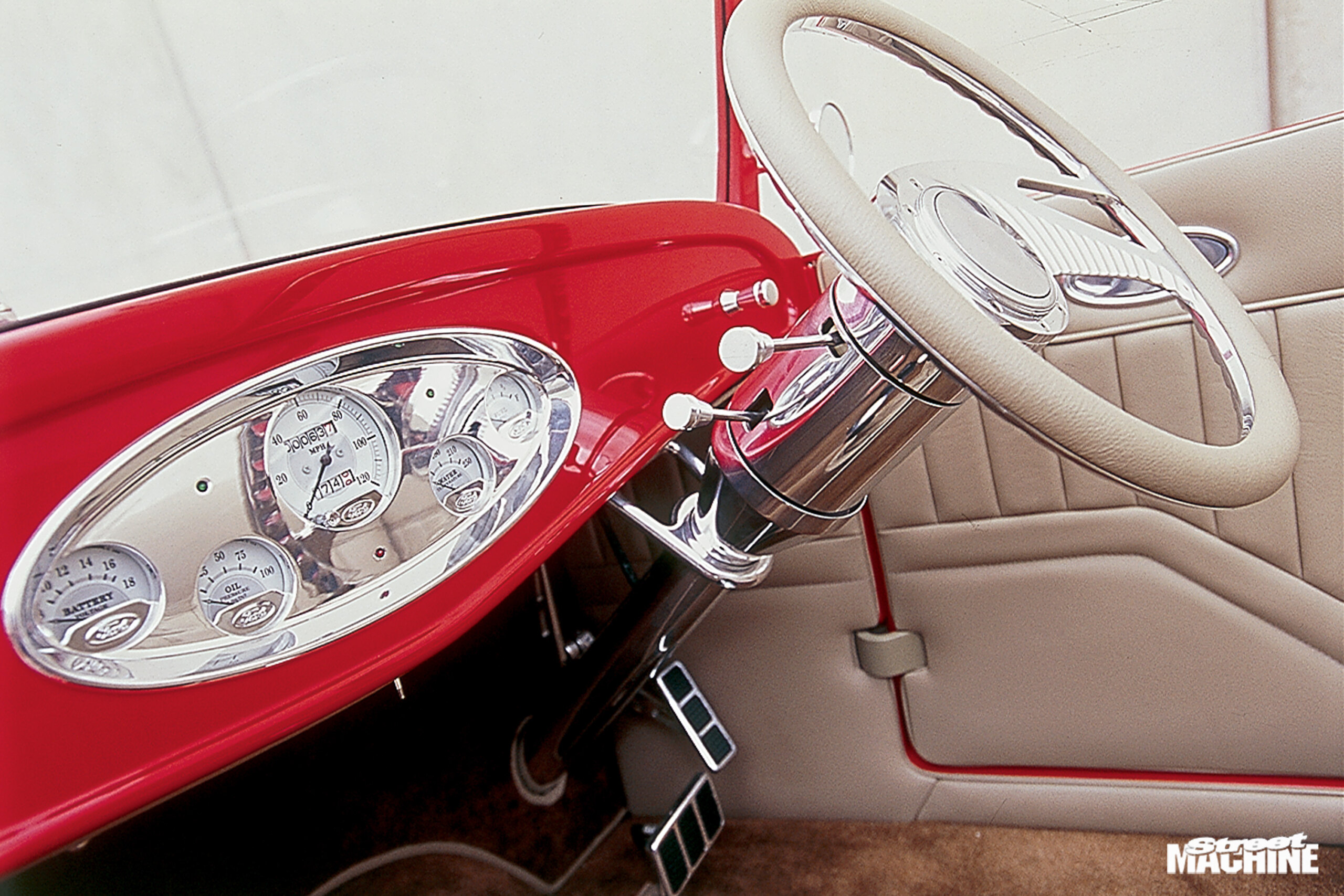
TEE TIME
Hot rodding really started when Americans returning from World War 2 started ‘hopping up’ old pre-war Fords, which were cheap and plentiful. It was pretty easy to slot a flathead V8 into an A-Model and that was the recipe for most early rods, but the ’32 has become the rod of choice today. That’s why Sultana went for the T-Model.
“You can order a ’32 and have it in a few weeks time,” he said, “but the Model T is rare. It’s smaller, just different.”

BILL SULTANA
1926 FORD MODEL T
| Colour: | Customised Sting Red acrylic |
| GRUNT | |
| Engine: | 355ci Chev |
| Carbs: | Dual Holley 600cfm double pumpers |
| Blower: | 6/71 BDS |
| Head: | Alloy Bowtie angle plug |
| Crank: | Steel |
| Rods: | Carrillo |
| Pistons: | Keith Black |
| Sump: | Hot Rod Undies |
| Cam: | Crow, solid |
| Fuel pump: | Barry Grant 220 |
| Ignition: | Vertex Magneto |
| Exhaust: | Custom headers, dual 3-inch pipes, with SuperTrapp mufflers |
| GRIND | |
| Trans: | THM 350 three-speed auto, Stage 2 shift kit |
| Converter: | 2500rpm stall |
| Tail-shaft: | F350 shortened |
| Diff: | Harrop 9in, 31-spline axles |
| RIDE | |
| Suspension: | beam axle, four-bar, coil-overs (f); four-bar and coil-overs (r) |
| Brakes: | XF Falcon discs, VR Commodore front calipers (f&r) |
| Wheels: | Convo Pro, 15×3.5 (f), 15×14 (r) |
| Rubber: | 135×15 Michelin (f), 31x15x16.5 (r) |
| COMFORT | |
| Trim: | Doe-skin leather |
| Carpet: | Jaguar |
| Wheel: | Billet Specialties |
| Column: | Billet Specialties |
| Shift: | Lokar |
| Dials: | Ford Motorsport |
| Dash: | Billet ’32 |
THANKS
David Xerri, Wayne Spiteri, Mark Sultana, Mark Course, Laurie at Complete Metal Finishing, and Kevin and Pauline from Hot Rod Hardware.
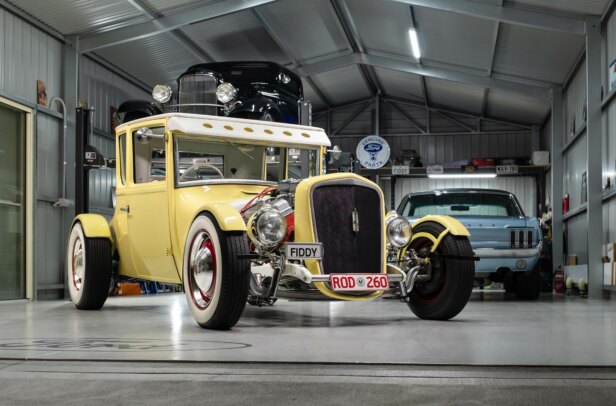
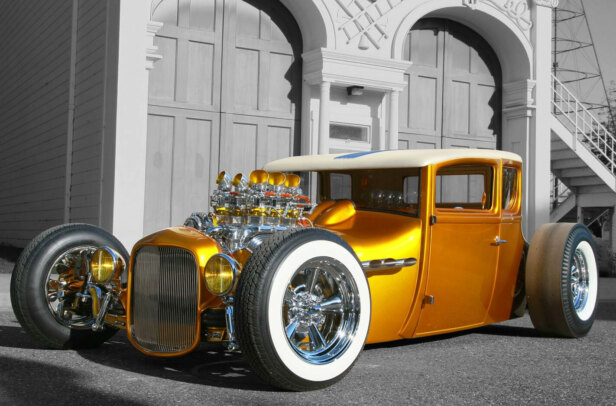
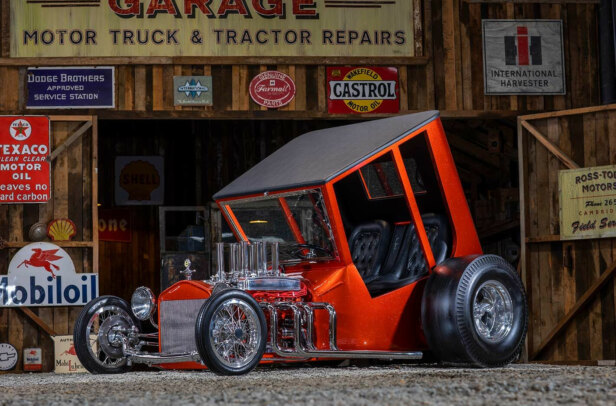
Comments